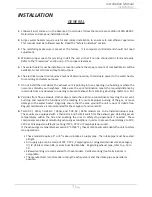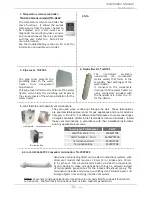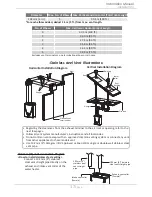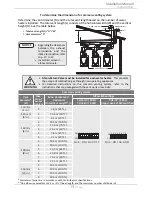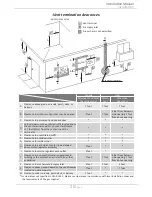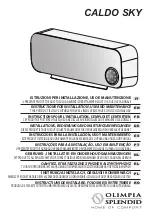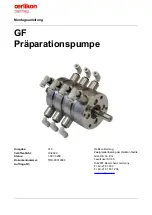
7
Page
INSTALLATION
GENERAL
1.
Follow all local codes, or in the absence of local codes, follow the most recent edition of CSA B149.1,
Natural Gas and propane installation code.
2.
All gas water heaters require careful and correct installation to ensure safe and efficient operation.
This manual must be followed exactly. Read the “Safety Guidelines” section.
3.
The manifold gas pressure is preset at the factory. It is computer controlled and should not need
adjustment.
4.
Maintain proper space for servicing. Install the unit so that it can be connected or removed easily.
Refer to the "Clearances" section on p. 9 for proper clearances.
5.
The water heater must be installed in a location where the proper amount of combustible air will be
available to it at all times without obstructions.
6.
The electrical connection requires a means of disconnection, to terminate power to the water heater
for servicing and safety purposes.
7.
Do not install the unit where the exhaust vent is pointing into any opening in a building or where the
noise may disturb your neighbors. Make sure the vent termination meets the required distance by
local code from any doorway or opening to prevent exhaust from entering a building. (Refer to p. 20.)
8.
Particles from flour, aerosols, clothes dryers and other airborne contaminants may clog the air vent,
build up and reduce the functions of the rotating fan, cause improper burning of the gas, or cause
damage to the water heater. Regularly ensure that the area around the unit is dust- or debris-free.
Regular maintenance is recommended for these types of environments.
9.
T-H3J-DV / 240H, T-H3S-DV / 340H, and T-H3-DV / 540H models are to be installed indoors only.
These units are equipped with a thermistor and hi-limit switch for the exhaust gas, detecting excess
temperatures within the flue and enabling the unit to safely stop operations if needed. These
components are always monitoring exhaust gas conditions in order to prevent heat damage to PVC,
CPVC or Polypropylene (Plastic) venting if PVC, CPVC or Polypropylene is used.
If the exhaust gas temperature exceeds 60 °C (140 °F), these components will enable the unit to safely
stop operations.
•
These models require a 3" or 4" make-up intake air supply pipe. The intake pipe must be sealed
airtight.
•
Air supply pipe can be made of PVC, CPVC , Polypropylene, corrugated stainless steel, Category
lll / IV stainless steel, ABS, or aluminum flexible tube. Regarding exhaust pipe, refer to p. 14 to
19.
•
Sidewall venting is recommended for these models. Vertical venting (roof termination) is
acceptable.
•
The manufacturer recommends running the exhaust vent and the intake pipe as parallel as
possible.
Installation
Installation Manual







